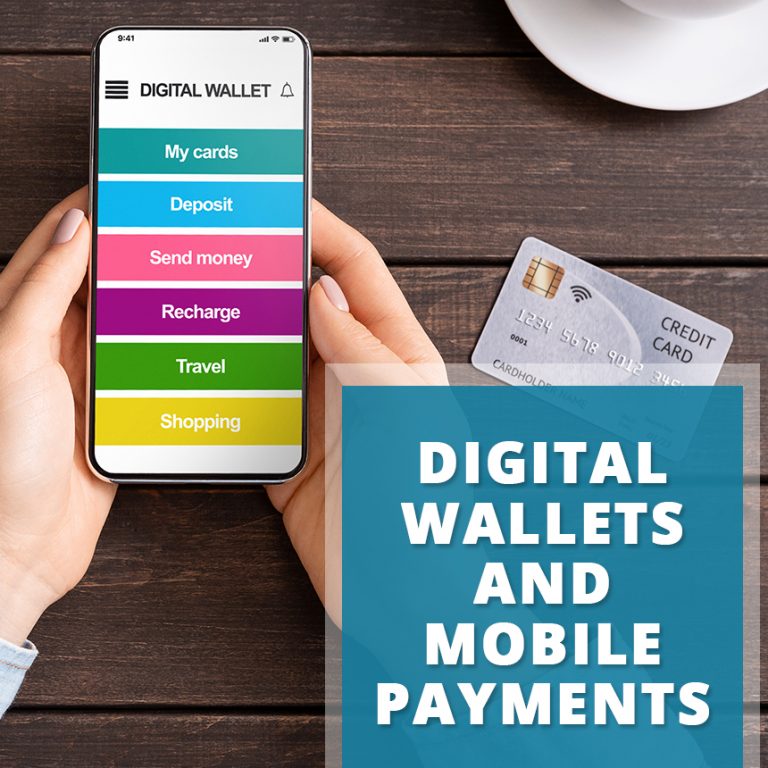
Electronic transactions are lifelines of online businesses. The use of digital wallets and mobile payments are increasing with ease to access the internet on mobile phones and desktops. Research suggests that by 2023, the active user base of digital wallets will grow up to 1.3 billion.
Similarly, the rapidly increasing mobile consumer base is driving the growth of mobile payment transactions. It is estimated that the transaction value of mobile payment apps will reach nearly $14 trillion.
Related: Witness New Digital Transformation Trends of 2020
What are Digital Wallets?
Digital wallets or e-wallets are the online services that provide the convenience of making cashless transactions by storing multiple digital payment options. With the help of digital wallets, users could store payment information and make payments as and when required. The digital wallets are usually secured with the help of passwords, pins, and phone lock patterns.
It allows users to store customer information securely (e.g., email address), payment information (such as debit or credit card data), and shipping address details. The user has options to preselect a payment method within the wallet application for faster execution of transactions.
Users can make an online payment using the digital wallet to book movie shows, buy pizza online, or shop on e-commerce sites.
Current available and accessible mobile wallet options among the users are Apple Pay, Google Pay, and Samsung Pay. Out of 39% of the mobile wallet owners, 64% of them pay using mobile devices. Apple Pay is the leading mobile wallet with 227 million users as of 2020, followed by 100 million users each under Google and Samsung Pay.
Related: Few Essential things to know about Cashless Payments
However, six types of mobile wallets are available for online users:
- Near-Field Communications (NFC): The “tap and go” payment using NFC is a tokenized wallet embedded in the device, using host card emulation (HCE) in the cloud. It uses Bluetooth Low Energy (BLE) to make a payment using smartphones. Examples are Apple Pay, Android Pay, Samsung Pay.
- Mobile-Based billing: Users can send or receive payments through their mobile service providers. A typical example of such payment is the electricity bill generation and payment through Google Pay.
- SMS-Based transactions: It includes transactions made by sending shortcodes through an SMS. Use cases of text-based transactions are P2P funds transfer, consumer-to-business physical-world purchases. The payment gets debited or credited from the configured bank account or credit card.
- Optical/QR Code: It is the most trending digital payment method currently because of the ease of using it. You just need an optical scanner on your mobile devices to scan the QR code displayed by the merchant.
- Peer-to-Peer Payments: These are mostly identified as a mobile payment platform that allows sending and receiving payments to friends, contacts, customers, and merchants through digital fund transfer option. Examples of such payments are Alipay, Paytm, PayPal, Pay with Amazon, ICICI Pockets.
- Direct Carrier Billing: These are the bills that are put on your phone bills when you buy apps from app stores, or make in-app purchases. It also includes the purchase of extra data when the monthly data limit from the service provider is over.
What are the advantages of having digital wallets and mobile payment options on your website?
Budget Saving:
Since it’s a direct payment method between the customers and your business, you save the business budget by removing third parties, which are usually paid as transaction fees.
Direct Access to Funds:
When customers upload funds on digital wallets, most of the time, these funds stay in the wallet untouched and are used when customers want to buy something or make a payment.
Hence, till that time, you have immediate access to such funds that you could invest for your business. However, since these are digital funds, your business is supposed to avail money when the customers are ready to shop or pay bills.
Cost Reduction:
Less dependency on point-of-sale (POS) devices reduces the cost of spending money on buying or installation of such POS systems.
Use of Blockchain Technology:
Using future technology, such as Blockchain, you could provide a most secure and trustworthy platform for customers to have a safe transaction experience.
Improvement in Customer Satisfaction Rate:
By providing mobile payment options, you are providing a fast, secure, and sophisticated medium for online payments. Hence, it puts a positive impression of your brand on the customer mind and helps to improve customer experience with your business.
Provides a Competitive Edge to Your Business:
Many online businesses are yet to implement digital wallets and mobile payment methods on their websites. Hence, it’s an opportunity for you to stay in the front and become competitive with other big online players.
If your vision is to transform your business into an online company, then you need to think about the integration of digital wallets and mobile payment methods on your site. Do you know how? Register yourself on GoFounders and get access to ONPASSIVE’s AI-driven e-Wallets that track and monitor fund transactions and provide the flawless online payment experience to the customers.
Related: Offline to Online Success Stories: Advantages of Digital Transformation of Your Business



Susie McCrea
4 years ago
Jessie Akofa Mantey Ocansey
4 years ago
ONPASSIVE
4 years ago
ONPASSIVE
4 years ago